Abdominoplasty Post Weight Loss in Newcastle, Maitland & Hunter Valley Australia
Book Online NowAfter significant weight loss, many patients are left with excess skin around the abdomen. Abdominoplasty effectively removes this skin and tightens the abdominal muscles.
Dr. Bernard Beldholm focuses on post-weight loss body contouring and performs abdominoplasty at Maitland Private Hospital in the Hunter Valley, easily accessible from Newcastle, Sydney, and across NSW.
For patients with extensive excess skin, Dr. Beldholm may recommend a Fleur de Lis abdominoplasty. Learn more about this procedure on our page: “Fleur de Lis Abdominoplasty in Newcastle, Maitland & Hunter Valley, Australia.“
Key Takeaways
- Abdominoplasty removes excess skin and tightens muscles, which is especially beneficial for post-weight loss patients and post-pregnancy patients.
- Ideal candidates are in good health, have maintained stable weight for at least six months, and are non-smokers.
- Dr. Beldholm provides personalised follow-up care and monitors recovery alongside his dedicated nurse.
- Full, extended, and mini abdominoplasty options are available, tailored to each patient’s needs.

Understanding Abdominoplasty Post Weight Loss
After significant weight loss, many individuals are left with loose or excess skin that does not retract to their new body shape. This often results in discomfort, friction during exercise, and chronic rashes, making daily activities challenging. Abdominoplasty focuses on these issues by removing excess skin and tightening abdominal muscles.
It is generally recommended to consider abdominoplasty 12 to 18 months after weight loss surgery to ensure that the body has stabilised and the weight loss is maintained. This waiting period ensures optimal surgical outcomes, giving the skin time to retract naturally as much as possible.
Book Online NowWhat is Abdominoplasty Post Weight Loss?
Abdominoplasty was originally designed to remove excess skin from the abdomen. It is particularly effective for patients who have experienced significant weight loss and are left with redundant skin. The best results are typically seen in patients with skin primarily loose in the vertical direction.
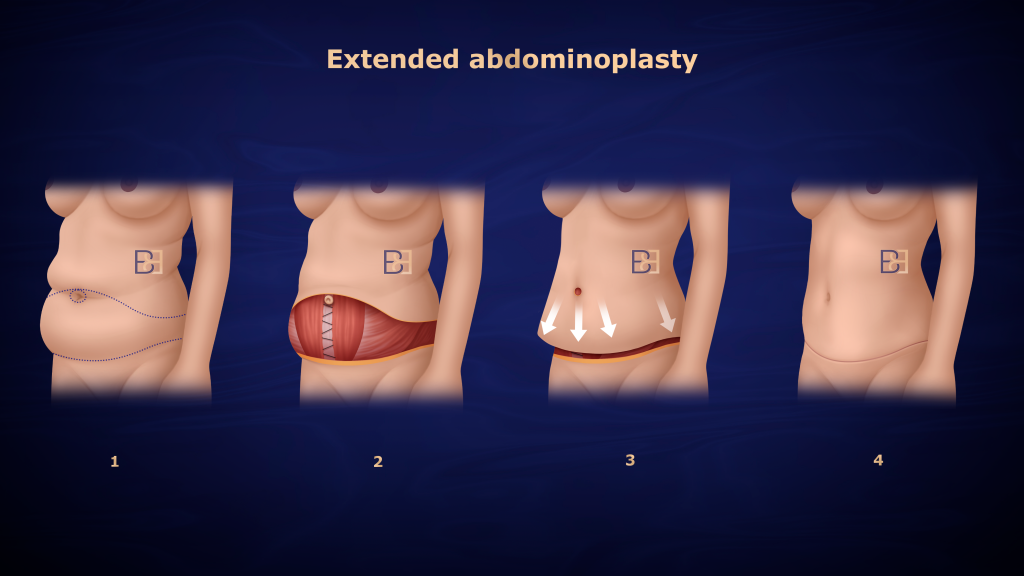
For many post-weight loss patients, the challenge isn’t just loose skin, but also the presence of significant adipose tissue (fat). In these cases, Dr. Beldholm often combines abdominoplasty with suction-assisted lipectomy to target and remove these fat deposits.
Additionally, post-weight loss patients often experience hernias, such as umbilical or ventral hernias, which can be repaired during the abdominoplasty procedure. This not only speaks to aesthetic concerns but also abdominal strength and function.
While diastasis recti (separation of the abdominal muscles) is more commonly associated with pregnancy, it is also frequently seen in post-weight loss patients. This condition can also be corrected during an abdominoplasty.
Dr. Beldholm’s approach to abdominoplasty is comprehensive, treating not just excess skin, but also fat, muscle separation, and hernias, providing a solution for post-weight loss patients.
The benefits of undergoing abdominoplasty after massive weight loss are numerous. Excess skin after weight loss can cause discomfort, friction during exercise, and chronic rashes. Removing this excess skin through abdominoplasty greatly aids with mobility, daily activities, and exercise. Additionally, tightening the abdominal muscles can improve posture and core strength, contributing to overall physical wellness.
Ideal Candidates for Abdominoplasty Post Weight Loss
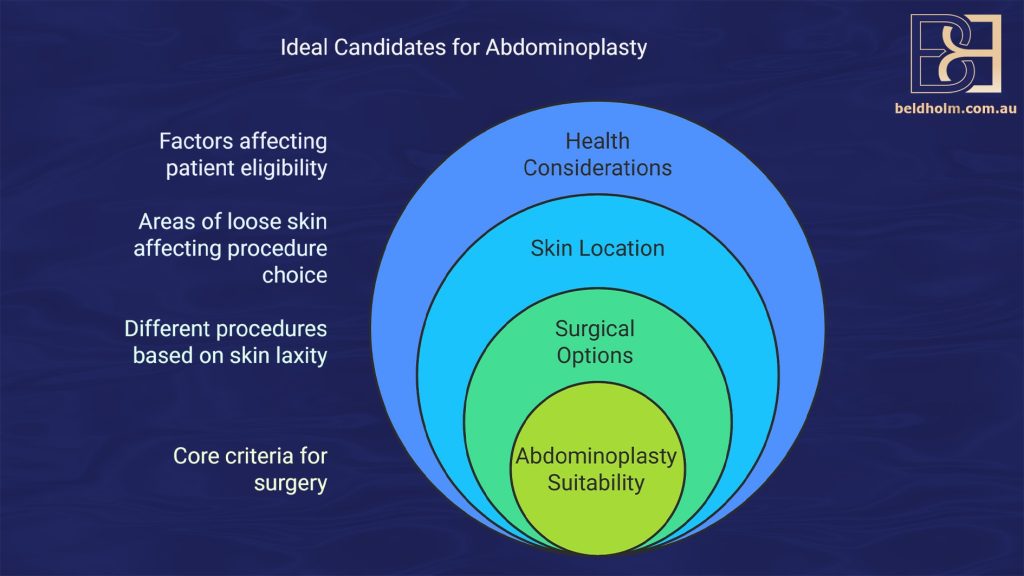
When considering abdominoplasty, two main factors need to be evaluated: the location of excision and the patient’s overall health.
- Location of Loose Skin:
- If the loose skin is primarily in the lower & upper abdomen, a traditional abdominoplasty may be sufficient. However, if there is significant skin laxity in the horizontal direction as well, then a Fleur de Lis abdominoplasty may be more suitable. This procedure is designed to reduce skin laxity both vertically and horizontally, providing a more comprehensive result for patients with more extensive excess skin.
- Patients with significant external fat may also benefit from suction-assisted lipectomy.
- Wellness Considerations:
- Internal fat and a high BMI can make a patient less suitable for abdominoplasty, as significant fat around internal organs may need to be reduced before considering surgery. In such cases, a patient may need to focus on weight loss first to reach an optimal weight for surgery.
- Health conditions that can interfere with healing are also critical to consider. These include smoking, diabetes, and bleeding disorders. Smoking, in particular, significantly impairs the body’s ability to heal and increases the risk of complications. It’s essential for candidates to be fit to ensure a smooth recovery and optimal results.
Dr. Beldholm’s approach to abdominoplasty is tailored to each patient’s unique anatomy, ensuring that the procedure chosen is best suited to achieve the pateint’s goals.
Types of Abdominoplasty Procedures

Abdominoplasty after significant weight loss is different from other types of tummy tuck (abdominoplasty) procedures, as it requires special considerations due to the nature of skin changes caused by weight loss. The skin often has poor elasticity and is stretched, with numerous stretch marks. Additionally, the umbilicus is typically stretched and may be “buried” in the loose skin, while the abdominal wall may also be stretched even if there is no muscle separation (diastasis recti). These challenges make post-weight loss abdominoplasty more complex, and careful selection of the procedure type is crucial.
Given these unique factors, it’s important to tailor the surgical approach to each individual’s anatomy and weight loss journey. Below are the primary types of abdominoplasty used after weight loss.
Mini Abdominoplasty
I have included the mini abdominoplasty here for completion, but it is important to note that this procedure is almost never used for post-weight loss patients. It is more commonly performed for post-pregnancy patients who have a small amount of excess skin or “overhang” in the lower abdomen or around a C-section scar. The mini abdominoplasty is designed to remove excess skin below the navel through a smaller incision, making it less invasive than a full tummy tuck (Abdominoplasty) . However, for post-weight loss patients, the amount of skin laxity is usually more extensive, requiring a more comprehensive approach, such as a full or extended abdominoplasty.
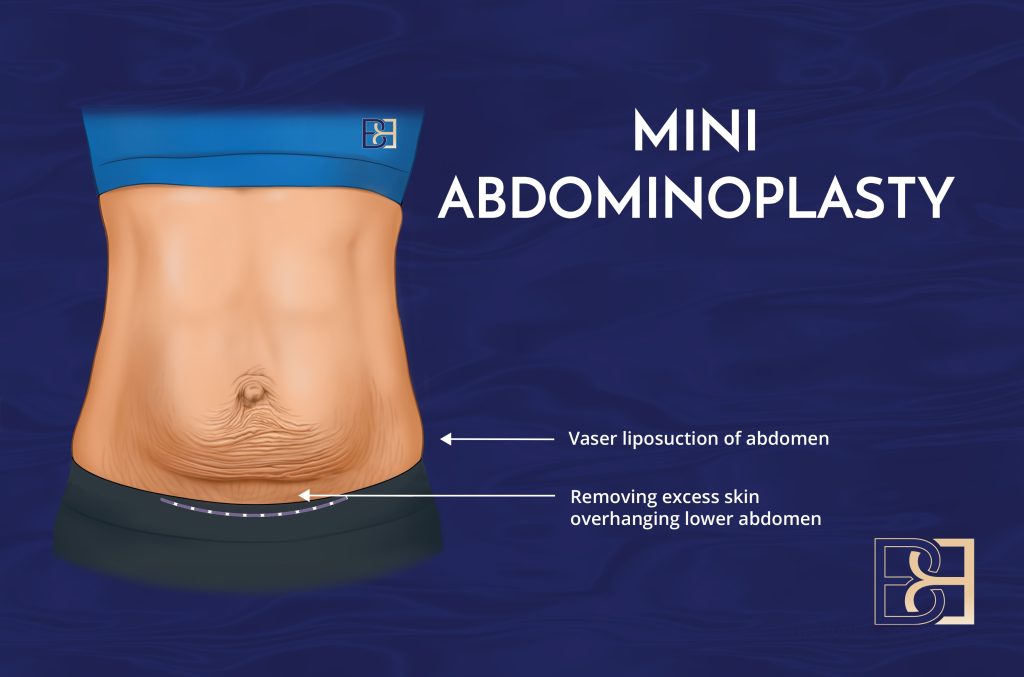
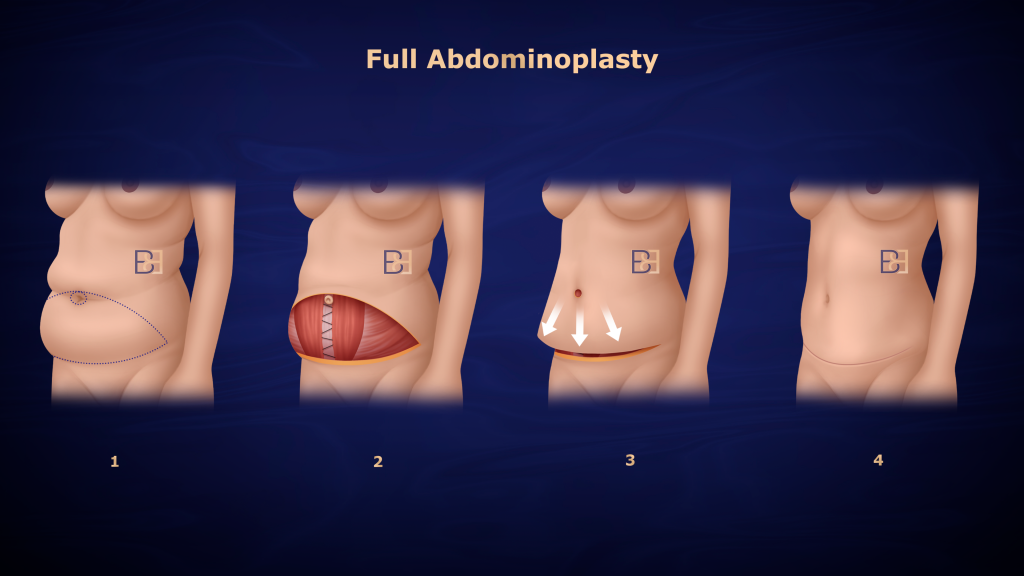
Full Abdominoplasty
A full abdominoplasty is a surgical procedure that involves an incision extending from hip to hip, primarily targeting the upper and lower abdomen. This procedure is often performed on patients who have excess skin after pregnancy, especially when the skin laxity does not extend to the flanks and hips.
In contrast, patients who have experienced significant weight loss often face considerable skin laxity in both the lower and upper abdomen, which typically extends to the sides and flanks as well. Therefore, a standard full abdominoplasty, which does not focus on the flanks and lateral abdomen, is less commonly performed on post-weight loss patients. Instead, many of these patients are recommended to undergo more extensive procedures, such as an extended abdominoplasty, to effectively treat the full extent of skin laxity in the abdominal and flank areas.
Extended Abdominoplasty
An extended abdominoplasty is particularly beneficial for patients who have undergone significant weight loss and are dealing with excess skin not only in the abdominal area but also around the flanks, hips, and lower back. This more comprehensive procedure involves a longer incision that extends beyond the hip and wraps around to the back, allowing for the removal of excess skin from both the abdomen and surrounding regions. Extended abdominoplasty is ideal for those who have experienced extreme weight loss and require a thorough solution to skin laxity throughout the midsection and lower body.

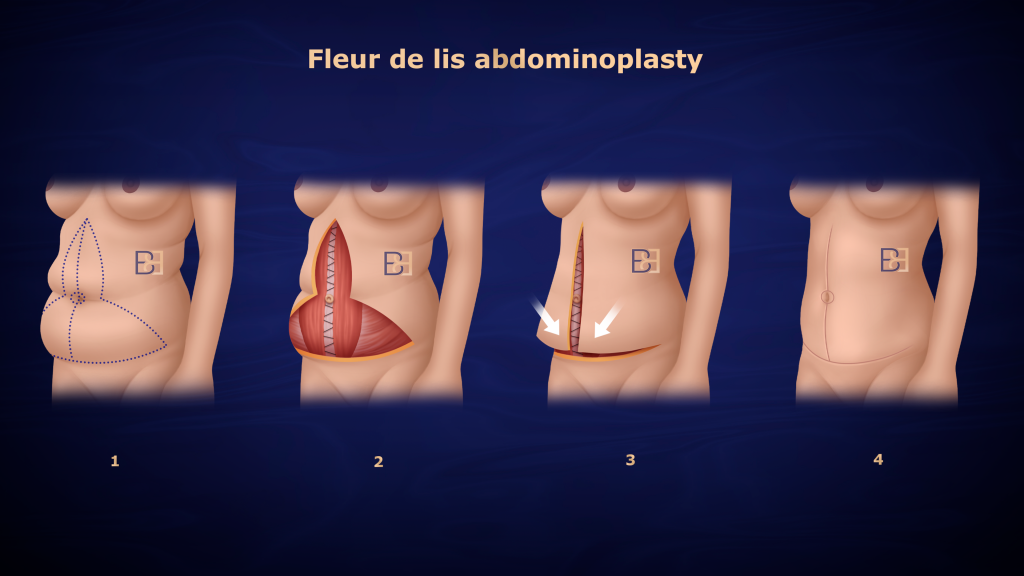
Fleur de Lis Abdominoplasty
For patients with extensive skin laxity in both the vertical and horizontal directions, especially after massive weight loss, the Fleur de Lis abdominoplasty is often recommended. This procedure involves a vertical incision in addition to the traditional horizontal one, allowing for more significant skin removal across the entire abdomen. The Fleur de Lis approach is ideal for those with a more pronounced loss of skin elasticity and a need for more extensive skin tightening.
Circumferential Abdominoplasty
In cases where there is extensive excess skin around the entire abdomen, including the back, circumferential abdominoplasty may be necessary. This procedure targets the abdomen, flanks, and back, skin laxity around the entire midsection. It is most often performed on patients who have undergone massive weight loss.
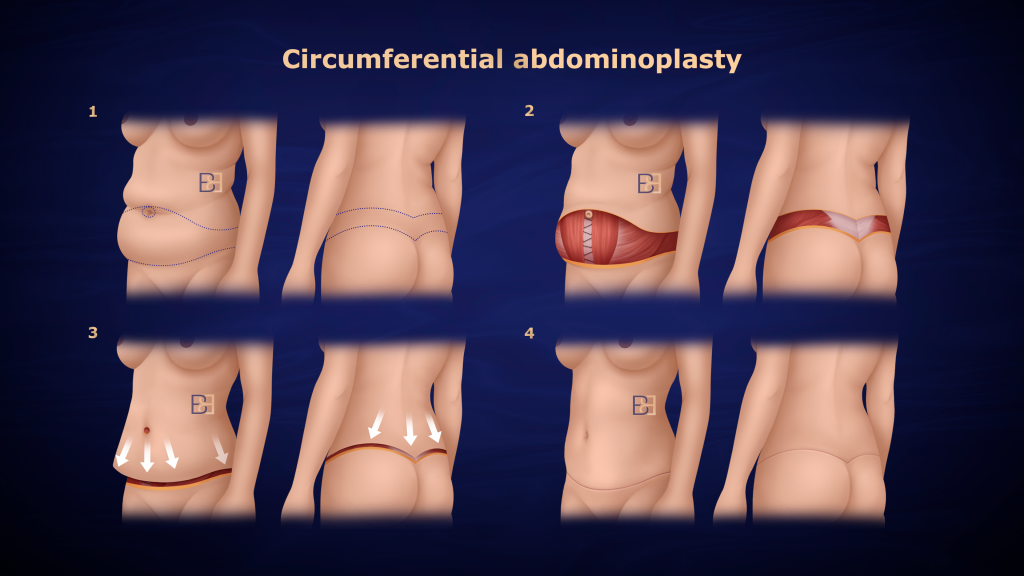
Apronectomy
An apronectomy is a surgical procedure specifically designed to remove the “apron” of excess skin that hangs over the pubic area. This procedure involves minimal undermining and does not treat other abdominal wall issues, such as muscle separation, hernias, or excessive fat. As a result, it is often used as a preliminary operation before a more extensive abdominoplasty.
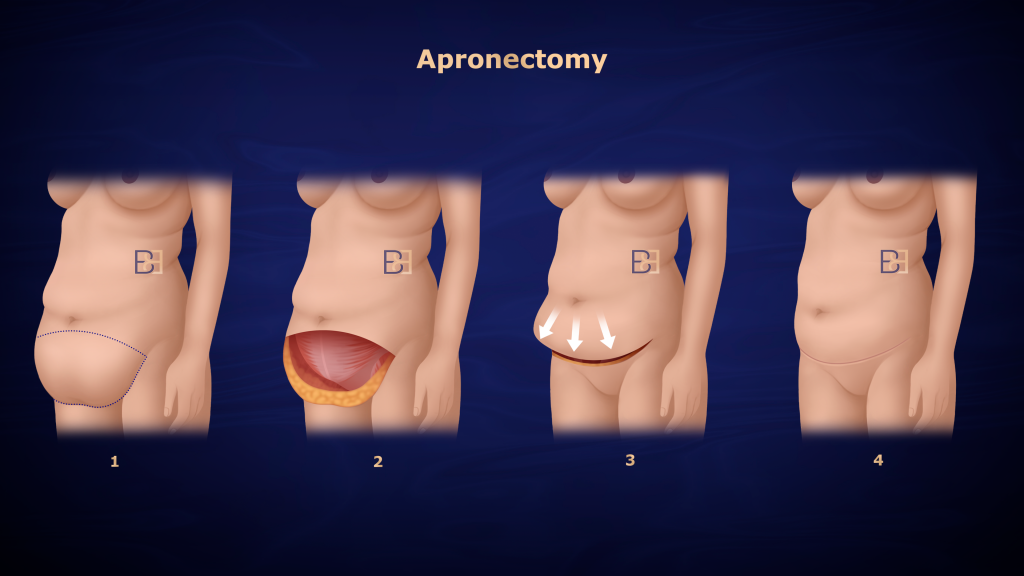
Due to the minimal tissue undermining involved, an apronectomy is generally completed in two hours or less. It is most commonly performed on patients with a Grade 4 or 5 apron, which indicates a significant amount of excess skin. This procedure can also be a viable option for patients with serious medical conditions that make more extensive surgery risky.
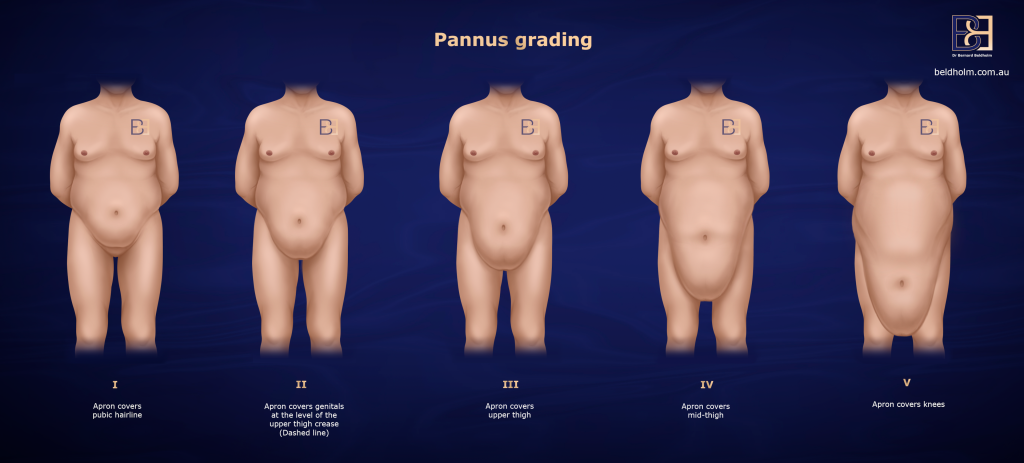
Incorporating Suction-Assisted Lipectomy with Abdominoplasty
For post-weight loss patients, there are generally two distinct groups:
- Patients in the Ideal BMI Range: These individuals have achieved their weight loss goals and are now in the ideal BMI range. They primarily have loose skin with minimal remaining fat. For these patients, abdominoplasty can remove the excess skin, often with minimal need for fat removal.
- Patients with a Higher BMI: These patients have lost a significant amount of weight, but still have a higher BMI once their weight stabilises. They may have remaining adipose tissue. If the fat is external, it can be treated with suction-assisted lipectomy (liposuction) as part of the abdominoplasty procedure. However, if the fat is internal or there are larger fat deposits, further weight loss may be necessary before considering surgery.
In either case, selecting the right approach depends on the patient’s body composition and weight loss progress to ensure optimal results.
Abdominoplasty with liposuction (Suction assisted lipectomy) for Post Weight Loss Patients
Abdominoplasty with liposuction (Suction assisted lipectomy) is a procedure designed to remove both loose skin and fat. The suction-assisted lipectomy component can be either standard or VASER, but Dr. Beldholm prefers VASER liposuction due to its ability to remove more fat with greater precision and less tissue damage, based on his extensive experience.
When suction-assisted lipectomy is added to an abdominoplasty, the liposuction is typically performed first, followed by the removal of excess skin. This approach allows for more thorough fat removal before tightening the skin. However, one consideration is that incorporating suction-assisted lipectomy into the procedure adds 1.5 to 2 hours to the overall surgery time.
Hernia Repair as Part of your Surgery
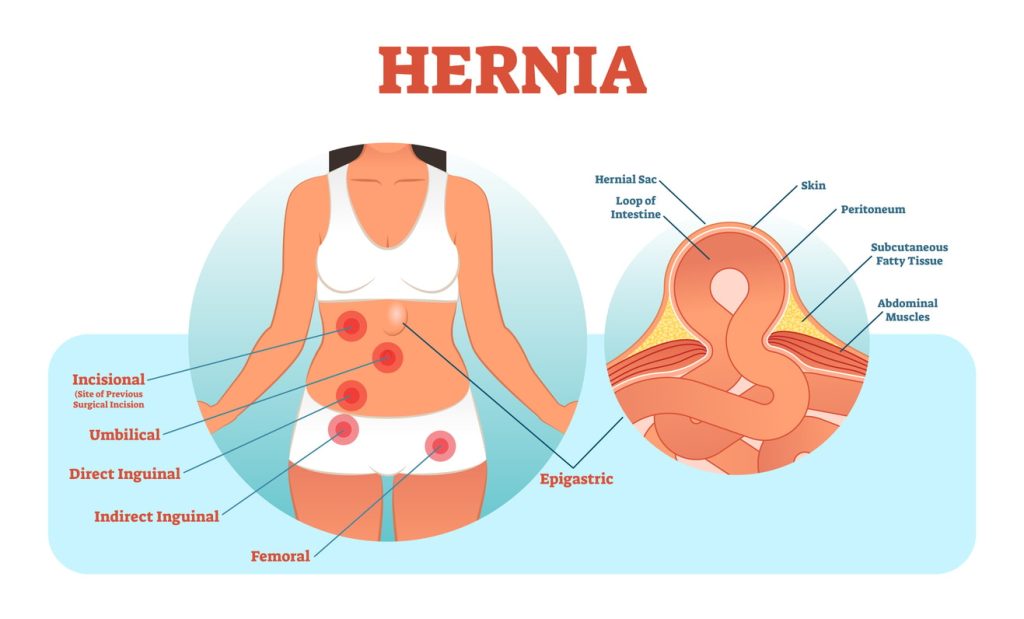
Hernias are very common and can be repaired as part of your Body contouring surgery. Incorporating hernia repair into the procedure can treat issues such as inguinal, femoral, umbilical, and Spigelian hernias, providing both functional and aesthetic benefits.
Combining hernia repair with abdominoplasty allows patients to focus on multiple issues in a single procedure, achieving a comprehensive surgical outcome.
The Surgical Process
The surgical process for abdominoplasty involves several stages, including preoperative preparation, the surgery itself, and postoperative care. Each stage is crucial for ensuring a successful outcome and smooth recovery for the patient.
Knowing what to expect during each phase helps patients feel more prepared about their decision to undergo a tummy tuck (Abdominoplasty).
Preoperative Preparation with Dr. Beldholm
Dr. Beldholm believes in extensive preparation and individualised care to ensure the best possible outcomes for each patient. You can expect at least two consultations before your surgery, with the initial consultation being charged, and any subsequent consultations provided complimentary.

Zoom consultations are available for some of these meetings for travelling patients, though at least one in-person consultation is required for a thorough evaluation. During your consultation, Dr. Beldholm will discuss your goals and expectations, review your medical history, and evaluate areas of excess skin and fat to determine the best surgical approach.
You will be asked to undress for both a physical examination and to take preoperative images for your medical records. Dr. Beldholm will explain all aspects of your procedure, including the details of the surgery, expected outcomes, and the recovery process. You will receive extensive information to ensure you fully understand the procedure and are well-prepared for what lies ahead.
Additionally, our patient coordinator will assist you with all logistical aspects, including quotes, hospital bookings, and financial considerations, ensuring a seamless and well-organised process leading up to your surgery.
Your Body Contouring Surgery
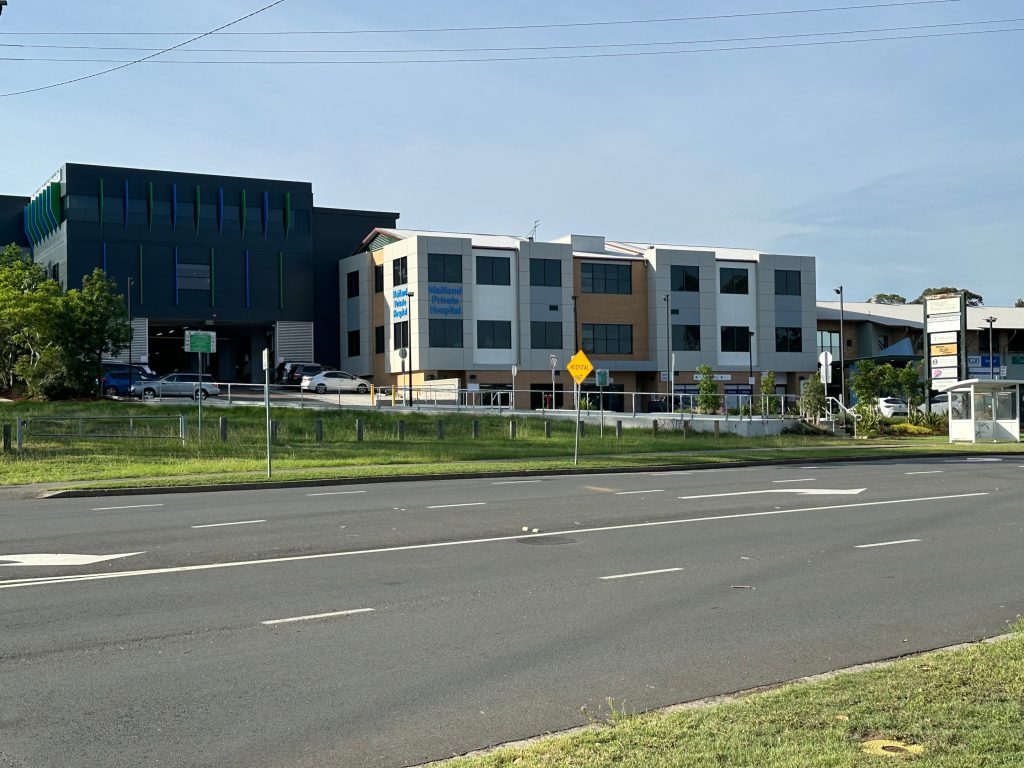
Surgery is performed at Maitland Private Hospital. Abdominoplasty typically requires a 1-3 day hospital stay for recovery. During your time in the hospital, Dr. Beldholm will visit you daily to monitor your progress and ensure your recovery is on track.
Postoperative Care
The key to a successful recovery is dedicated postoperative care. Dr. Beldholm will visit you daily while you are in the hospital to monitor your progress. The first day after surgery is often the toughest, but once you get through it, you will typically start feeling significantly better in the following days.
It’s important to begin mobilising as soon as you’re able, even with limited movement, to promote circulation and prevent complications. Breathing exercises will also be encouraged to support lung function and prevent respiratory issues.
You will be provided with a compression garment, which should be worn to help reduce swelling and support your healing. PICO dressings will cover your incisions to promote proper healing and minimise the risk of infection.
Recovery and Results
The recovery process following an abdominoplasty can vary, but most patients take two to four weeks off work to allow their bodies to heal. Resting and avoiding strenuous activities during this time is important to prevent complications and ensure proper healing.
Light exercise can usually be resumed within two to three weeks after the procedure.
Recovery Timeline
Most individuals can return to work within 10 to 14 days following an abdominoplasty. Postoperative discomfort typically peaks within 24 to 72 hours after the procedure, and incision wounds generally heal within two weeks.
Complete recovery can take around three months or longer, with patients advised to avoid strenuous activities for about six weeks.
Managing Swelling and Discomfort
Common postoperative symptoms after abdominoplasty include swelling, bruising, and tenderness. Swelling can take up to 12 months to completely resolve, but wearing compression garments can help manage swelling and reduce the risk of complications.
Changes in skin sensation, such as numbness and brief shooting pains, are frequently observed and usually temporary. To prevent blood clots, patients are encouraged to engage in short walks and maintain a balanced diet to aid recovery.
Long-term Results and Maintenance
Maintaining a stable weight and engaging in regular exercise are essential to preserving abdominoplasty results. Patients may experience visible scarring, including keloid and hypertrophic scars, which can become prominent over time.
Attending follow-up appointments is essential for monitoring recovery and catching any potential complications early. By adhering to a healthy lifestyle and following Dr Beldholm’s advice, patients can enjoy the long-term benefits of their weight loss achievements and abdominoplasty.
Risks and Complications
As with any major surgery, abdominoplasty carries potential risks and complications. Common risks include wound infections, respiratory infections, particularly in obese patients, and the formation of seromas. Patients may also experience changes in skin sensation and scarring, with tummy tuck (Abdominoplasty) scars typically taking 12 to 18 months to fully mature.
Final Conclusions by Dr Beldholm
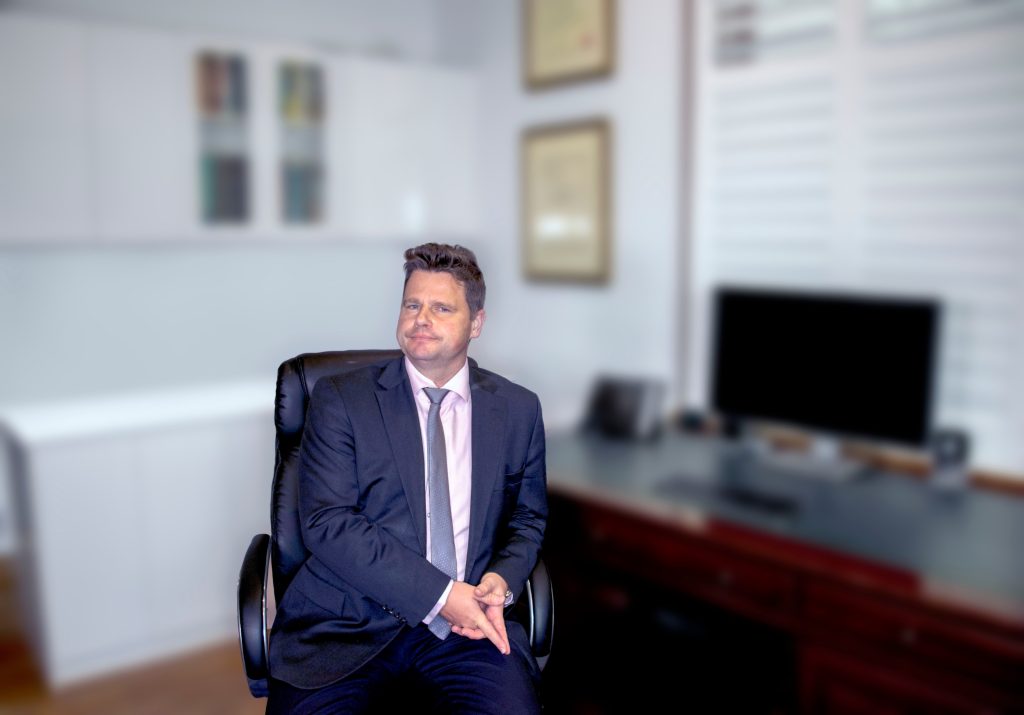
Abdominoplasty Post-Weight Loss is a specialised procedure tailored for post-weight loss patients. These patients have unique characteristics that distinguish them from other groups, and it is essential to accurately assess the skin and fat to achieve the best possible outcome. Due to the significant skin laxity and potential areas of fat deposits, the procedure may require longer scars compared to other types of abdominoplasty.
Dr. Beldholm has over 15 years of experience performing body contouring surgery for post-weight loss patients, and his expertise allows for a comprehensive evaluation and personalised surgical approach. By thoroughly assessing each patient’s needs, Dr. Beldholm ensures that the surgical plan is optimised for the best functional & aesthetic results.
Learn more about the recovery process following abdominoplasty post weight loss
Learn more about the potential complications associated with abdominoplasty post weight loss
Learn more about the costs of abdominoplasty post weight loss
Frequently Asked Questions
What is the purpose of the extended Abdominoplasty with VASER liposuction (Suction assisted lipectomy)?
The extended VASER lipo-abdominoplasty aims to address issues of excess skin, separated muscles (diastasis recti), and localised fat deposits (adipose tissue), particularly in individuals who have experienced significant weight loss. This procedure provides a comprehensive solution for loose skin and improving overall abdominal aesthetics.
How does the extended Abdominoplasty with VASER liposuction (Suction assisted lipectomy) differ from a full Abdominoplasty?
The extended Abdominoplasty with VASER liposuction (Suction-assisted lipectomy) offers comprehensive removal of skin and adipose tissue in the central abdomen, hips, flanks, and thighs, unlike a full tummy tuck (Abdominoplasty), which primarily targets just the central abdominal area.
Who are the ideal candidates for an extended Abdominoplasty with VASER liposuction (suction-assisted lipectomy)?
The ideal candidates for an extended VASER lipo-abdominoplasty are individuals with excess loose skin and muscle laxity in the abdominal area, often resulting from weight loss. This procedure is particularly beneficial for those seeking to achieve a more toned and defined midsection.
What are the main steps involved in the extended Abdominoplasty with VASER liposuction (Suction assisted lipectomy) procedure?
The main steps in the extended Abdominoplasty with VASER liposuction (Suction assisted lipectomy) include repositioning the navel, tightening the rectus abdominis muscles, performing extensive VASER liposuction (Suction assisted lipectomy), and removing excess skin. These steps are essential for achieving the result.
What is the expected recovery time after the extended VASER lipo-abdominoplasty?
The expected recovery time after extended VASER lipo-abdominoplasty involves a hospital stay of 2 to 5 days, with a return to work around 2 weeks post-surgery and resumption of full exercise after approximately 6 to 8 weeks.
